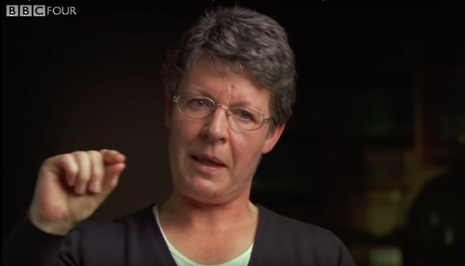Jocelyn Bell Burnell: the astronomer sparking debate on representation in science
Jocelyn Bell Burnell, the astronomer who discovered the first pulsar in the 1960s, has just been awarded a £2m prize. She wants to set up a scholarship for underrepresented minorities

Half a century since her discovery of pulsars – for which she was almost unrecognised at the time – the astronomer Jocelyn Bell Burnell has recently been awarded a prize to the tune of over £2 million. Almost immediately, however, she has offered to use her well-deserved winnings to fund a scholarship for minority groups in physics. In the light of this incredibly generous action, one must ask: what motivated her to do this?
The original story of her discovery remains remarkable. After heading to Cambridge for her PhD, Bell Burnell’s work in radioastronomy had been gruelling. The construction of the four-acre radio telescope alone had taken two years; consisting of an array of hundreds of metal poles built by an old railway line a little west of Grantchester, it had required a massive amount of manual labour. The lack of automation seems, in retrospect, incredible: maintenance of the grass throughout the array was accomplished using sheep rather than lawnmowers. Even when operations began, an unthinkable amount of effort was required just to keep things moving – Bell Burnell was painstakingly analysing about thirty metres of data printouts each day. For six months, progress had been dispiritingly slow. But then, one fateful day, Bell Burnell noticed what she described as a half-centimetre of ‘scruff’ in one of the recordings.
Her supervisor, Anthony Hewish, was at first dismissive, thinking that it was either a stray signal from Earth or some sort of instrument interference. It was even semi-seriously suggested that it might be evidence of sentient life elsewhere in the universe. This ‘interference’ was, in fact, the first observation of a pulsar, a rapidly-rotating neutron star that emits periodic electromagnetic radiation. On its publication in Nature – credited to Hewish as the lead author – the research was rightly lauded as a milestone in twentieth-century astronomy. Six years later, the Nobel Prize went to Hewish and Martin Ryle for their discovery of pulsars – yet Bell Burnell was ignored, nominally because she was only a student at the time. “Demarcation disputes between supervisor and student are always difficult to resolve,” she generously commented, “and it is the supervisor who has the final responsibility for the success or failure of the project.”
Some fifty years on, Bell Burnell’s work has recently been rewarded with the Breakthrough Prize, established by a panel of tech entrepreneurs including the founders of Google and Facebook “to recognise those individuals who have made profound contributions to human knowledge”. On receiving the £2.3 million prize money, however, she decided to use it to fund under-represented groups in physics. “I don’t want or need the money myself and it seemed to me that this was perhaps the best use I could put to it,” she said in an interview with BBC News.
Bell Burnell said that while at Cambridge, she had suffered from that all-too-familiar imposter syndrome, being intimidated by the highly confident attitudes of the men around her. Yet coming at the research from a very different direction and viewpoint to almost all of her collaborators, her perspective, she thinks, was key to her success: “I found pulsars because I was a minority person and feeling a bit overawed at Cambridge. I was both female but also from the north-west of the country and I think everybody else around me was southern English… I have this hunch that minority folk bring a fresh angle on things and that is often a very productive thing.”
The prize money will be administered by the Institute of Physics, a body of which Bell Burnell was president from 2008 to 2010. She was also an integral part of the team of female academics who developed the Athena SWAN scheme for improving gender representation in the sciences. Under this scheme, the Cambridge Institute of Astronomy received a Bronze Award in 2014, recognising “a solid foundation for eliminating gender bias” and the development of “an inclusive culture that values all staff”.
 News / Clare Hall spent over £500k opposing busway 24 December 2025
News / Clare Hall spent over £500k opposing busway 24 December 2025 News / Caius mourns its tree-mendous loss23 December 2025
News / Caius mourns its tree-mendous loss23 December 2025 Comment / The ‘class’ of Cambridge24 December 2025
Comment / The ‘class’ of Cambridge24 December 2025 Comment / Yes, I’m brown – but I have more important things to say22 December 2025
Comment / Yes, I’m brown – but I have more important things to say22 December 2025 Interviews / Politics, your own way: Tilly Middlehurst on speaking out21 December 2025
Interviews / Politics, your own way: Tilly Middlehurst on speaking out21 December 2025










